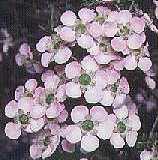 The evidence confirms its antibacterial properties and additional beneficial effects of medical honey on wound healing, according to this article published in Evidence-based Complementary and Alternative Medicine.
The evidence confirms its antibacterial properties and additional beneficial effects of medical honey on wound healing, according to this article published in Evidence-based Complementary and Alternative Medicine.
What is it?
- Leptospermum is a genus of about 80 species of plants in the myrtle family, Myrtaceae, which is marketed as Medihoney.
How does it work?
- It’s hygroscopic, meaning it draws moisture out of the environment and dehydrates bacteria.
- In addition, it has anti-inflammatory effects.
- More on its action is summarized here.
How it is applied to wounds?
- Medical honey dressings (or poultice) should keep the honey in contact with the wound for at least 12 hours — preferably 24 hours.
- In stable wounds, the Medihoney dressing has been left in place up to 7 days.
Safety
- About 5% of patients report stinging pain after administration.
- Local hypersensitivity reactions are less common.
- No systemic reactions have been reported.
The bottom line?
It might be a treatment option for MRSA (methacillin-resistant Staph aureus) skin infections. The article discusses other uses as well.
The author’s concluded, “The current evidence … should encourage other wound care professionals to use CE-certified honey dressings with standardized antibacterial activity, such as Medihoney products, as an alternative treatment approach in wounds of different natures.”
1/11/08 19:36 JR